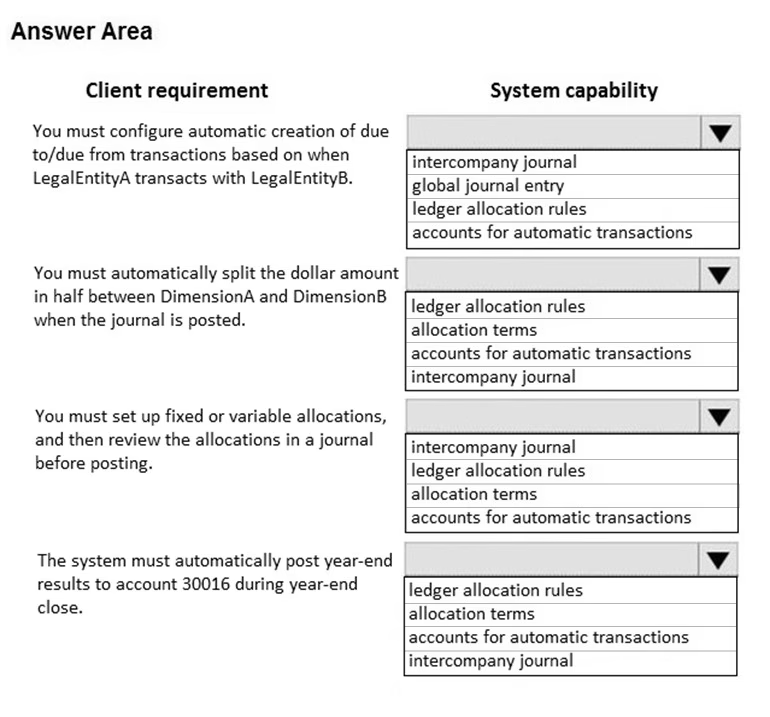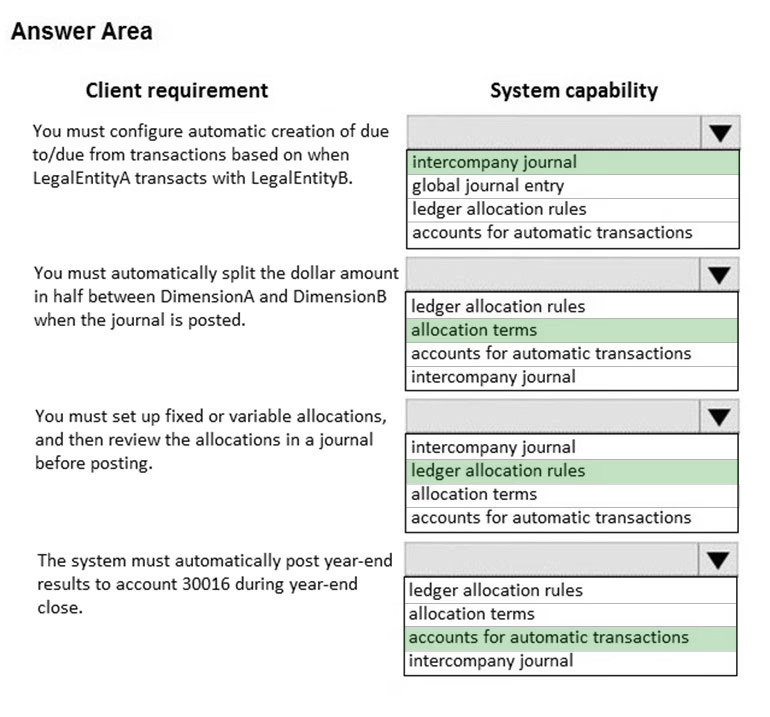Note: This question is part of a series of questions that present the same scenario. Each question in the series contains a unique solution that might meet the stated goals. Some question sets might have more than one correct solution, while others might not have a correct solution.
After you answer a question in this section, you will NOT be able to return to it. As a result, these questions will not appear in the review screen.
You are configuring the year-end setup in Dynamics 365 Finance.
You need to configure the year-end setup to meet the following requirements:
✑ The accounting adjustments that are received in the first quarter must be able to be posted into the previous year's Period 13.
✑ The fiscal year closing can be run again, but only the most recent closing entry will remain in the transactions.
✑ All dimensions from profit and loss must carry over into the retained earnings.
✑ All future and previous periods must have an On Hold status.
Solution:
✑ Configure General ledger parameters.
- Set the Delete close of year transactions option to Yes.
- Set the Create closing transactions during transfer option to Yes.
- Set the Fiscal year status to permanently closed option to No.
✑ Define the Year-end close template.
- Designate a retained earnings main account for each legal entity.
- Set the Financial dimensions will be used on the Opening transactions option to No.
- Set the Transfer profit and loss dimensions option to Close All.
✑ Set all prior and future Ledger periods to a status of On Hold.
Does the solution meet the goal?

